“Air is Medicine”
–Lillian Russell
Clean air is a fundamental right which is increasingly becoming a luxury in 21st century cities. If there is one thing keeping us happy during the lockdown, it’s the cleaner air in our homes and balconies. Air quality in urban environments is generally moderate to unhealthy, and indoor spaces don’t have much better quality either due to accumulation of pollutants or limited air flow. Moreover, all the plastic and chemical products (chemical cleaners, bleach, scented air fresheners etc.) add to toxins levels in homes. During summers, ventilation increases, bringing outside pollutants inside. Similarly, since homes tend to be less ventilated during winters, our indoor chemical products do the job of polluting instead.
Air purifiers are an option, but houseplants win the battle between nature and machines any day- Don’t you agree? Improving overall air quality is a lengthy process involving governments and economies, but we can start from our homes with a few plants that purify the air around us, reduce toxins and subsequently increase oxygen content.
How do indoor plants impact the air in your home?
According to recommendations by NASA, low-light houseplants have been observed to improve air quality in the homes that they are placed in. They absorb carbon dioxide and increase oxygen availability within spaces. Additionally, they remove chemicals and pollutants that make their way into your home through windows and air conditioners. The air filtration is primarily conducted by the plant’s root-soil zone, which is why it is important to maximize soil-air exposure (eg: pick larger pots for your plant friends!). Houseplants also add aesthetic value to your home and are easy on your pocket. In addition, studies show that indoor plants help to maintain optimal humidity levels, improve concentration, productivity, and creativity, and reduce stress levels.
What houseplants are suitable for your home?
Here is a list of indoor plants that are relatively easy to care for, that will take care of you in return.
FLAMINGO LILY / LACELEAF

Scientific name: Anthurium
These plants have a ravishing red colour that can brighten up any room in your home. They do not require direct sunlight and flourish during the monsoon. Anthurium are adaptive plants that love humidity- making them ideal to grow indoors, even in kitchens and bathrooms!
Pollutants removed: Toluene, Ammonia, Formaldehyde, Xylene
ARECA PALMS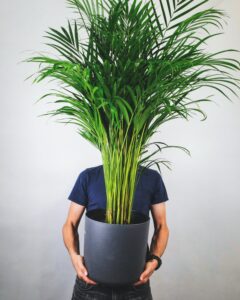
Scientific name: Chrysalidocarpus lutescens
Areca Palms are ideal for large spaces, perhaps your living room or balcony. They prefer moderate light, a good watering during summers and reduced watering in monsoons depending on if they are on your balcony or indoors. An added advantage is that they are non-toxic and pet friendly.
Pollutants removed: trichloroethylene, xylene, formaldehyde, benzene, carbon monoxide
 SNAKE PLANT / MOTHER IN LAW’S TONGUE
SNAKE PLANT / MOTHER IN LAW’S TONGUE
Scientific name: Sansevieria trifasciata
These are unique plants because they produce oxygen during the night too! These plants flourish by a moderately lit window and when watered 1-2 times per week (reduce during peak winters and monsoon). These are ideal plants for the bedroom because of their slender aesthetic and their nighttime oxygen production.
Pollutants removed: formaldehyde, trichloroethylene, benzene, xylene
ENGLISH IVY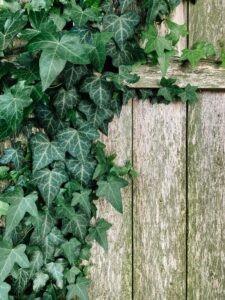
Scientific name: Hedera helix
This ranks on top of the list of most effect air-purifying indoor houseplants. They can be spotted on walls around the city, but they will be a special addition to your home. Make sure to water them thoroughly but not to the point that they are waterlogged. They can also tolerate moderate to bright indirect light- a perfect spot would be your living room or foyer. They also prefer small pots that are crowded and can even be placed in hanging baskets.
Pollutants removed: formaldehyde, benzene
 DRACAENA
DRACAENA
Scientific name: Dracaena
These gentle giants are perfect for filling up empty spaces in your living room or bedroom! They can grow more than 5 feet tall when cared for well. Ensure that they get indirect light and moderate watering, about once a week.
Pollutants removed: trichloroethylene, xylene, formaldehyde
PEACE LILY 
Scientific name: Spathiphyllum
Peace lilies are true to their name because they are fairly no-fuss to care for. They can be added to spaces in your home that receive low light and water about once a week. These plants are also special because they can tolerate fluorescent lights like lamps- add them to your desk for a unique work buddy!
Pollutants removed: trichloroethylene, xylene, formaldehyde, benzene, carbon monoxide
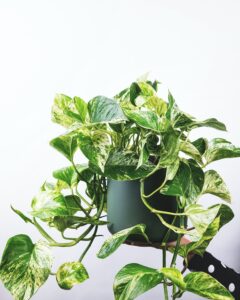 POTHOS / MONEY PLANT / DEVIL’S IVY
POTHOS / MONEY PLANT / DEVIL’S IVY
Scientific name: Epipremnum aureum
Pothos is also called devil’s ivy because it is almost impossible to kill, even when kept in the dark. These are beautiful plants that can grow in hanging containers, floor pots and even in water. They like bright, indirect light environments and watering after the top of the soil has dried. Note that these plants are toxic to humans, cats and dogs when ingested. These plants are best placed at a height and out of reach for those at risk of ingestion.
Pollutants removed: trichloroethylene, xylene, formaldehyde, benzene
CHINESE EVERGREENS 
Scientific name: Aglaonema
The evergreens have many varieties and are a must have in your indoor plant collection. They tolerate most environments but for the best growth and leaf colour, low to moderate light or shade with a moist soil is ideal. Fertilizer about twice every year is recommended for best plant health.
Pollutants removed: xylene, formaldehyde
 SPIDER PLANT
SPIDER PLANT
Scientific name: Chlorophytum comosum
Spider plants are beautiful, no-hassle plants for your home. Whether you’re a newbie or an experienced plant nerd, these plants are survivors and can even persist in very low temperatures. Place your plant in a moderate to bright location while keeping the soil slightly moist. Keep an eye out for the shoots of their baby spider plants which are known as spiderettes.
Pollutants removed: xylene, formaldehyde
ALOE VERA 
Scientific name: Aloe vera
Aloe vera plants like a well-lit room and infrequent watering, that is once the top of the soil has dried completely. An ideal spot would be a kitchen sill or next to any sunny window in your home. These magical plants are not only air-purifying, but also anti-inflammatory and help in curing wounds and sunburns.
Pollutants removed: formaldehyde
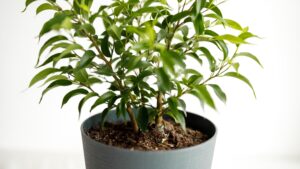 WEEPING FIG / FICUS
WEEPING FIG / FICUS
Scientific name: Ficus benjamina
These plants have a reputation of being able to grow very tall, given the right care and conditions. They like bright indirect light and weekly watering after the soil dries. Note that this plant doesn’t like change of location and is known to lose leaves when moved. An ideal spot for a weeping fig is a happy living room or balcony.
Pollutants removed: formaldehyde, trichloroethylene, benzene
BOSTON FERN 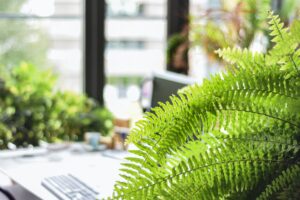
Scientific name: Nephrolepis exaltata v. Bostoniesis
Boston fern is also referred to as sword fern due to its fronds having the shape of a sword. This is an easy to grow fern that can liven up your bathroom or kitchen, in a pot or a hanging carrier. They prefer regular misting, well drained and moist soils, with indirect sunlight near a window or balcony.
Pollutants removed: xylene, formaldehyde
CHRYSANTHEMUMS
Scientific name: Chrysanthemum
These flowering plants have elegant white or yellow flowers that add life to your living room while being one of the best air purifiers on this list. They are more difficult to grow than other indoor plants, but their bloom makes the extra care worth it. They prefer moderate watering, and bright indirect light- a windowsill would be an ideal spot.
 RUBBER PLANT
RUBBER PLANT
Scientific name: Ficus Elastic
These hardy plants that are native to India, come in dark green and burgundy varieties. Their easy care makes them a great beginner plant and a grand home décor addition. They favour bright indirect light, weekly watering, and misting or wiping the leaves to retain moisture. Ensure that they don’t get direct sunlight as this may result in scorched leaves.
Pollutants removed: formaldehyde, trichloroethylene, benzene, xylene
References
Interior Landscape Plants for Indoor Air Pollution Abatement, by NASA
https://ntrs.nasa.gov/citations/19930073077
Air purifying plants: 20 of the best for your home, by Lottie Dalziel
https://www.bhg.com.au/best-air-cleaning-plants
The air purifying benefits of indoor plants, by Oasis
https://oasisplants.co.uk/the-air-purifying-benefits-of-indoor-plants/
9 Air-purifying Indoor Houseplants that are hard to kill, by Maria Janowiak
Related Experiences
- April 20, 2024
- 7:30 am to 9:30 am
- Cubbon Park
